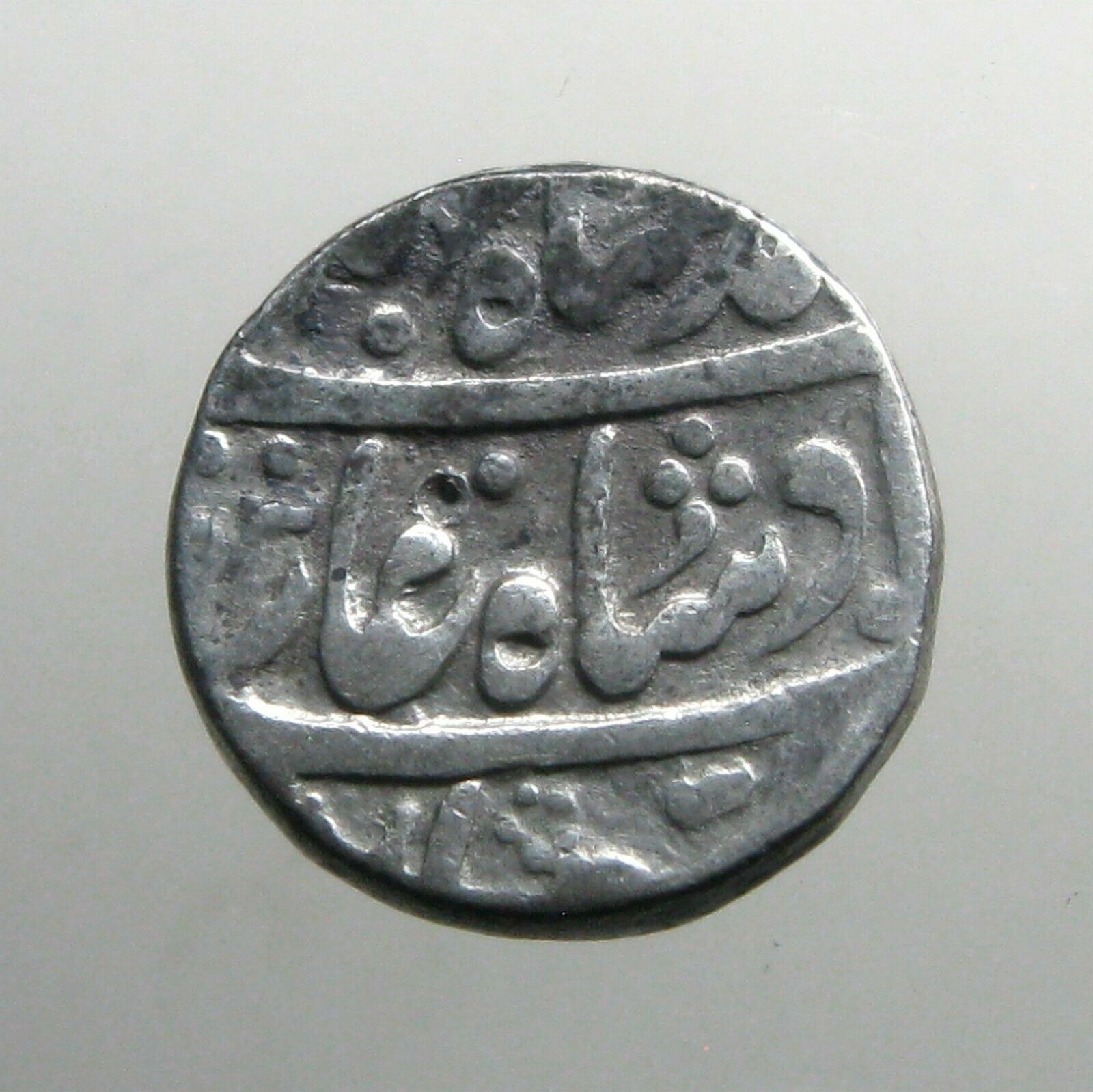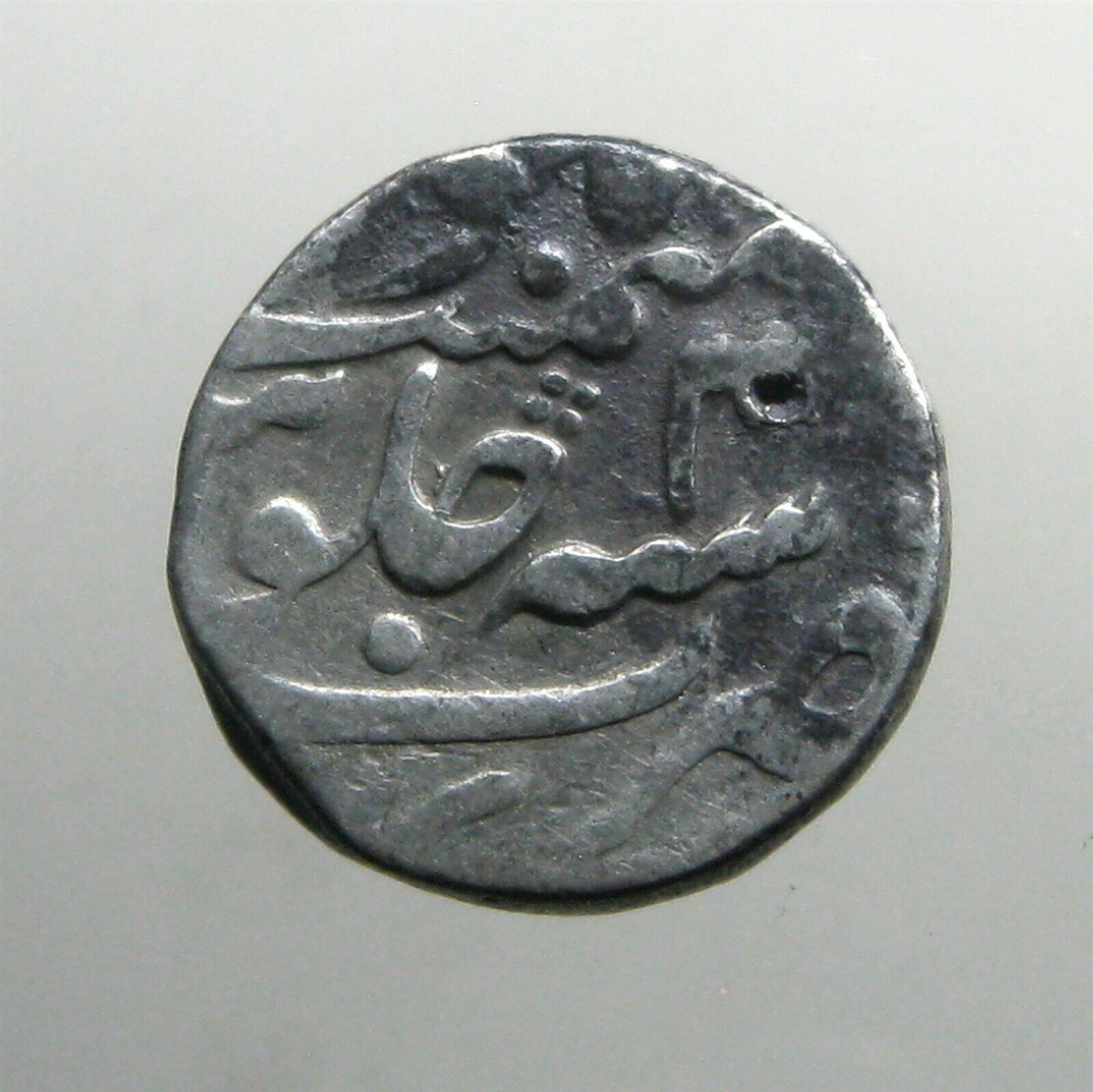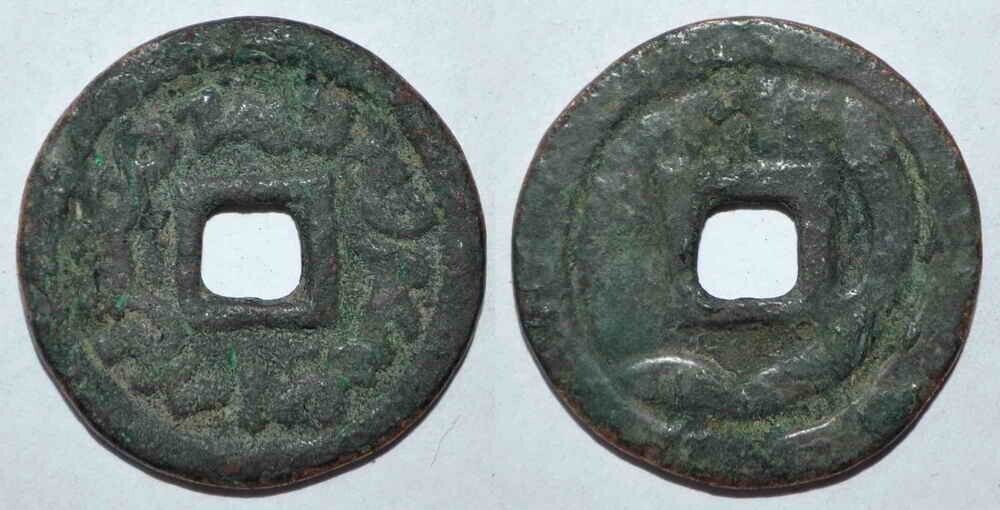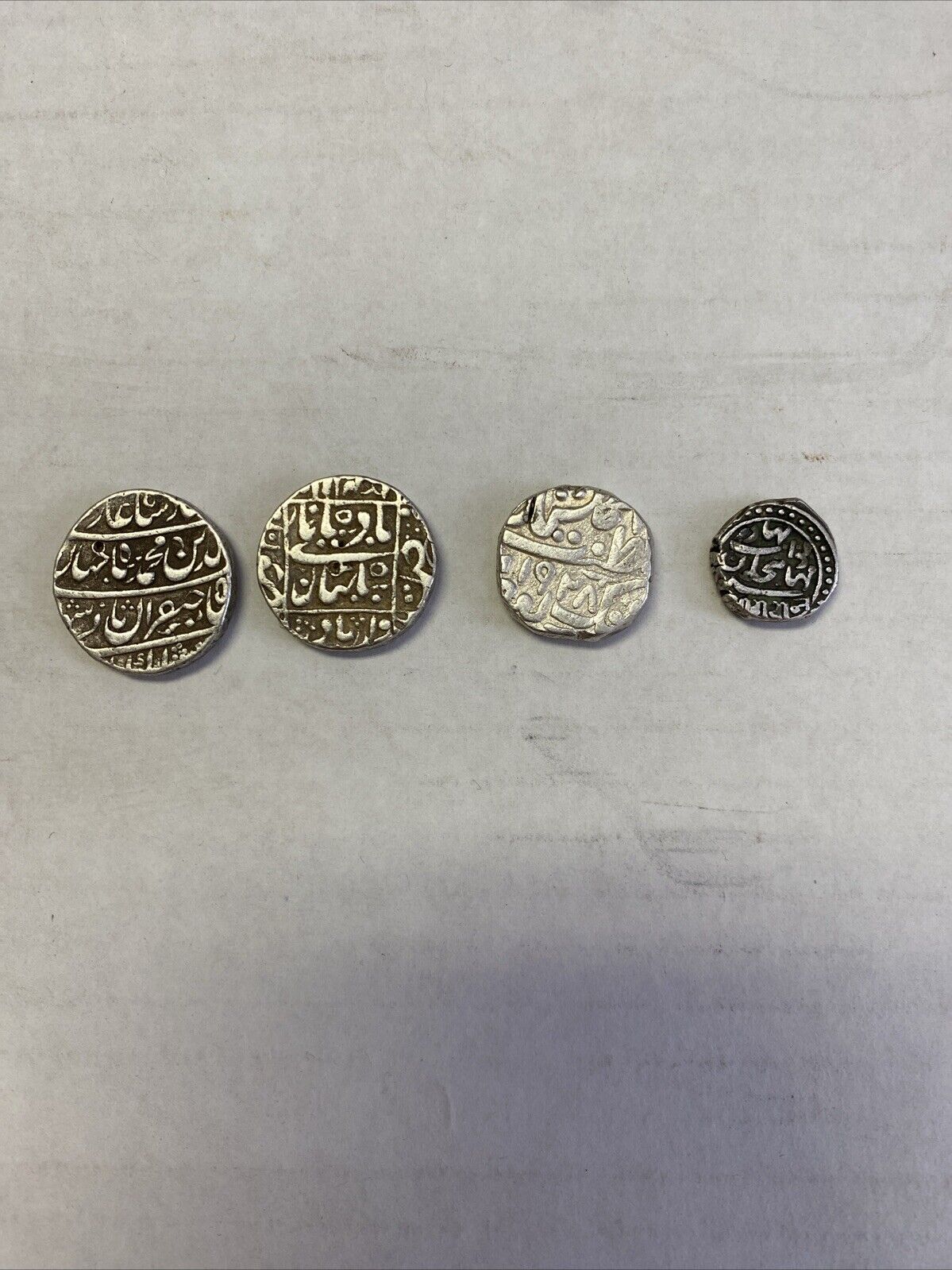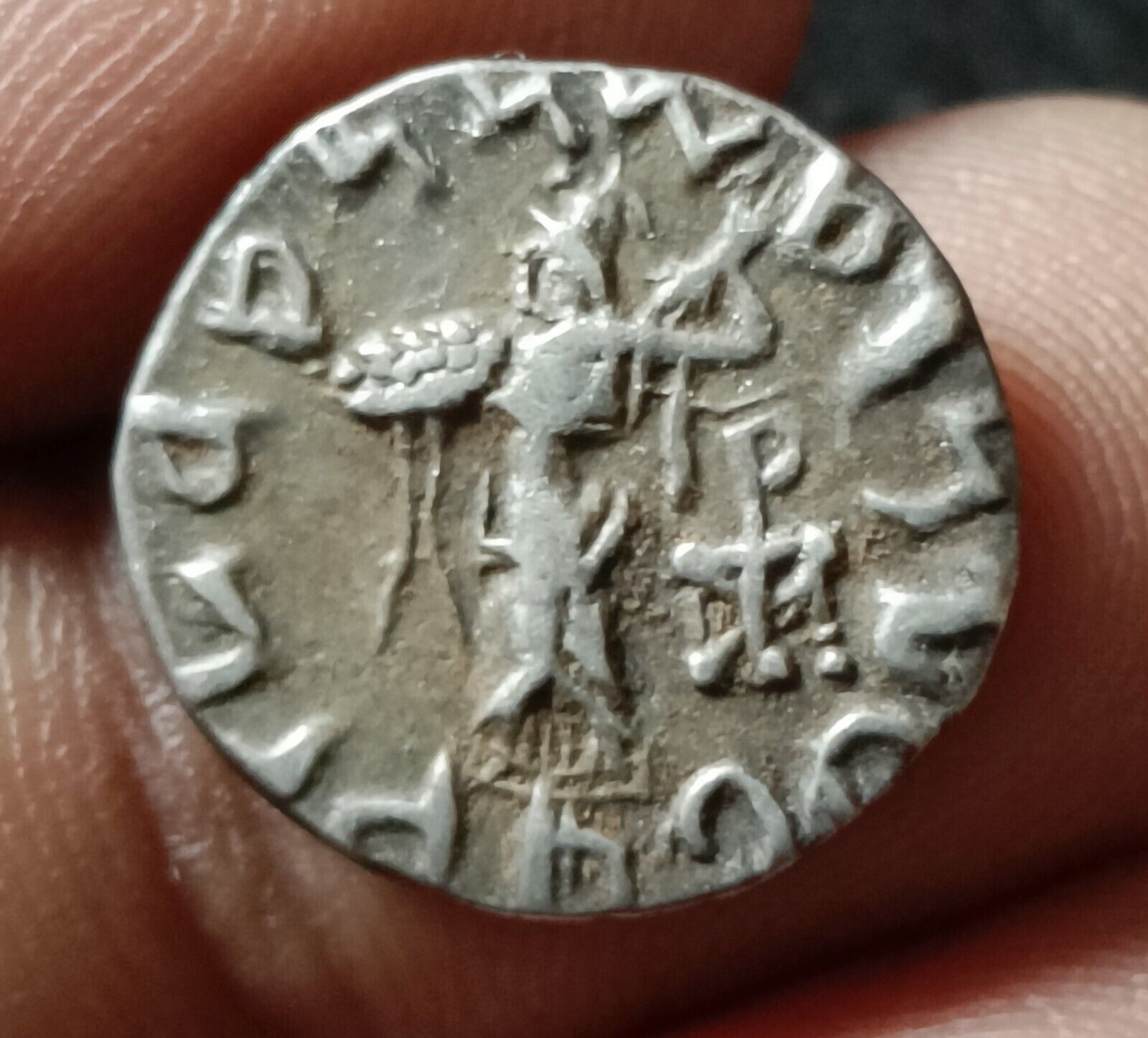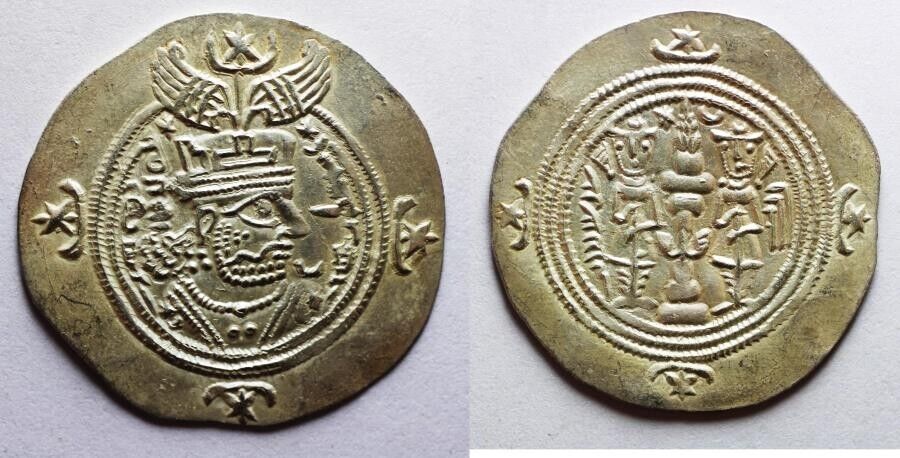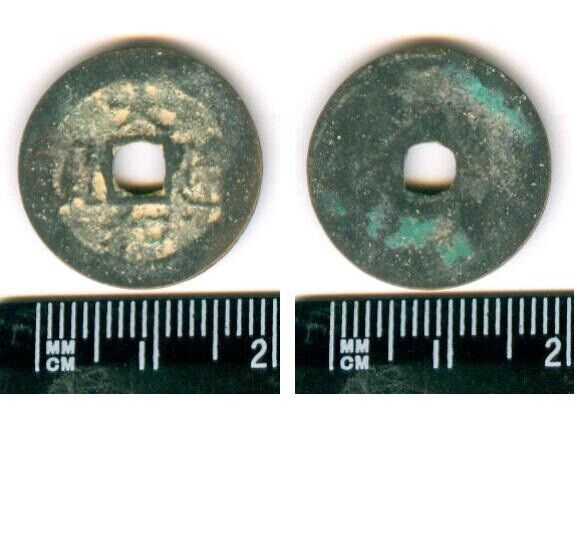-40%
MUGHAL SILVER RUPEE___India Empire__FOUNDED BY MONGOL DESCENDANT OF GHENGIS KHAN
$ 0.52
- Description
- Size Guide
Description
18P34FRASCATIUS ANCIENTS
A BEAUTIFUL SILVER RUPEE OF THE MUGHAL DYNASTY FROM THE 16TH TO THE 18TH CENTURY AD.
NICE LARGE SIZE IN ALMOST PURE SILVER
The empire was founded by the Mongol leader Babur. Babur was a descendant of Ghengis Kahn. The word "Mughal" is the Indo-Aryan version of "Mongol."
The Mughals needed to strike a high face value silver currency to satisfy their empire's extensive commercial trade.
THE SIZE IS 21.7 MM AND 9.43 GRAMS.
OBVERSE – Arabic / Persian Script - Name of the king at top
REVERSE – Arabic / Persian Script - Name of the mint in center
MUGHAL EMPIRE
The Mughal Empire was an empire that at its greatest territorial extent ruled parts of Afghanistan, Balochistan and most of the Indian Subcontinent between 1526 and 1857. The empire was founded by the Mongol leader Babur in 1526, when he defeated Ibrahim Lodi, the last of the Afghan Lodi Sultans at the First Battle of Panipat, where they used gunpowder for the first time in India. The Mughal Empire is known as a “gunpowder empire.”
The word "Mughal" is the Indo-Aryan version of "Mongol." Babur was a descendant of Ghengis Khan. The Mughals retained aspects of Mongol culture well into the sixteenth century, such as the arrangement of tents around the royal camp during military maneuvers. The religion of Mughals was Islam.
Under Akbar the Great, the empire grew considerably, and continued to expand until the end of Aurangzeb's rule. Jahangir, the son of Akbar, ruled the empire between 1605 and 1627. When Shah Jahan, Jehangir's son, became emperor in October 1627, the empire was large and wealthy enough to be considered one of the greatest empires in the world at that time.
It was Shah Jahan who commissioned the building that represents the pinnacle of Mughal architectural achievement, the Taj Mahal, between 1630 and 1653. Sponsors of art and of learning, the Mughals left a rich heritage of buildings, paintings and literature.
After Aurangzeb died in 1707, the empire started a slow and steady decline in actual power, although it maintained all the trappings of power in the Indian subcontinent for another 150 years. In 1739 it was defeated by the army of the Persian shah, Nadir Shah (1688-1747).
A True Auction Environment –
Auctions start at $.99 with No Minimums and No Reserves.
FULL UNCONDITIONAL GUARANTEE OF AUTHENTICITY
If the buyer feels that the coin received is not as represented - just return the coin and the buyer will be fully reimbursed for the cost of the coin; the original shipping charge; and the cost to ship the coin back… No Questions Asked. If the buyer is not happy, please let me know, and I will do what I can to make it right.
NOTE: Frascatius is a life member (LM #6864) of the American Numismatic Association (ANA). Frascatius fully complies with the ANA Member Code of Ethics.
If you have any questions regarding this auction, please click on “Ask seller a question”.
I will be more than happy to provide you with a response.
VISIT MY EBAY STORE: FRASCATIUS ANCIENT COINS
For those new to ancient coins, please contact me, and I will e-mail to you my "Beginners Guide for Ancient Coin Collectors - FAQ".
SHIPPING:
To the U.S. = .00 Insured Flat Rate
International = .50 Insured Flat Rate
Multiple items may be grouped at no additional charge at the above rates.
All items will be carefully packaged, protected & insured (private insurance).
Powered by SixBit's eCommerce Solution
